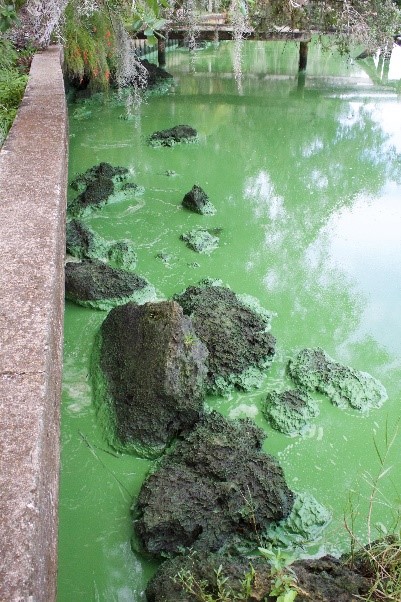By Capt. Sam O’Briant
September typically represents the last month of the rainy season in Southwest Florida. Hurricane probability is highest in September and harmful algal blooms most likely occur at this time of the year. With high rainfall runoff and the pollutants that come with it, fish, shellfish and other wildlife communities are often at risk. High water temperatures, depressed salinity, low dissolved oxygen and toxins from harmful algal species are typical threats. Anglers should reduce the time involved with landing and releasing fish especially when the water temperature is relatively high and oxygen levels are low.
Historically, wetlands would buffer the timing and volume of freshwater runoff into our estuaries. However, the loss of about 50 percent of historic wetlands in Southwest Florida has increased the stormwater runoff volume and associated pollutants. Bluegreen algae, more correctly referred to as cyanobacteria, can produce potent toxins and can be dangerous to both humans and pets, especially dogs. Risks associated with exposure to cyanobacteria can be found on our website but you would have to be able to distinguish cyanobacteria from similar algal species if alerts or warnings have not been made public. Better monitoring and notification of the presence of cyanobacteria is needed in Florida.


